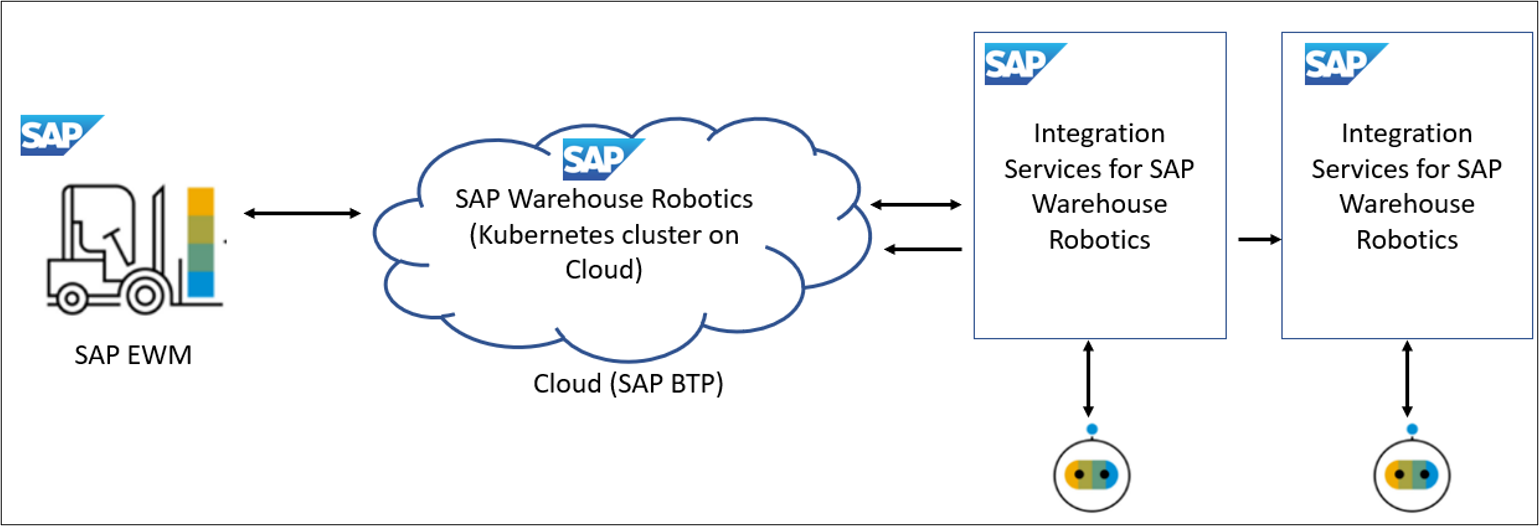Collaborative robotics is one of the latest advanced technologies in robotics.
Called cobots, they are considered collaborative in nature because they can safely work together with people since they are fitted and equipped with sensitive sensors that give the robot a human-like feel. While traditional robots simply continue their tasks when an obstacle gets in their way (potentially causing physical injury to people), a cobot moves into safety mode. These types of robots are available from many vendors at a lower cost than traditional robots; however, there is a major problem involving their integration with ERP landscapes.
To ensure that cobots can be easily integrated into the warehouse landscape of SAP, they recently introduced a product named SAP Warehouse Robotics. This application comes as an add-on to SAP EWM, with most of the available SAP EWM scenarios. SAP Warehouse Robotics is able to work with multiple different types of robots and associated heterogeneous fleets. This enables warehouse owners to scale up their automated processes on an ad hoc basis and avoid single vendor lock-in by using robots from multiple vendors.
SAP Warehouse Robotics is hosted on SAP Business Technology Platform, and works through an Edge Node computer installed on the robots which allows them to interact with other IoT devices (such as teammate cobots) independently from Wi-Fi or network connectivity.
The general flow of communication in SAP EWM to get the warehouse orders executed by a cobot looks like this:

Below lists a few of the important activities needed to be completed before the cobots can interact with SAP EWM to perform warehousing operations.
First, you must onboard the cobot. This requires the administrator in SAP Warehouse Robotics to install an Edge Node, define the cobot, and link the solution on the Edge Node to the cobot.
Next, you must configure SAP EWM for cobot Integration. This requires the administrator to define SAP EWM integration for each cobot, upload warehouse data, and define cobot facilities on SAP Warehouse Robotics.
Lastly, set up the cobot settings. Here, you define the cobots and assign them to the SAP EWM warehouse. You’ll also need to define order assignment and exception handling for the cobots.
SAP EWM assigns the warehouse order to the cobot resource and copies the order onto the cobot Edge Node service. During the execution of the warehouse order, the cobot continuously updates its local copy of the warehouse order, which is synchronized with SAP EWM as part of edge-to-application synchronization.
It should be noted that SAP Warehouse Robotics doesn’t support all the functional processes of SAP EWM, but a subset of them. The various scenarios which are supported by SAP Warehouse Robotics are cross-docking, put-away, and robot-enabled pick-pack-and-pass.
SAP Warehouse Robotics has quick implementation timelines. It provides SAP EWM customers a quick, low-effort, low-risk entry into warehouse robotics. As explained earlier, it provides a new degree of ad hoc scalability, enabling customers to meet peak demand by additional robots within minutes.
This post was originally published 3/2023.



Comments